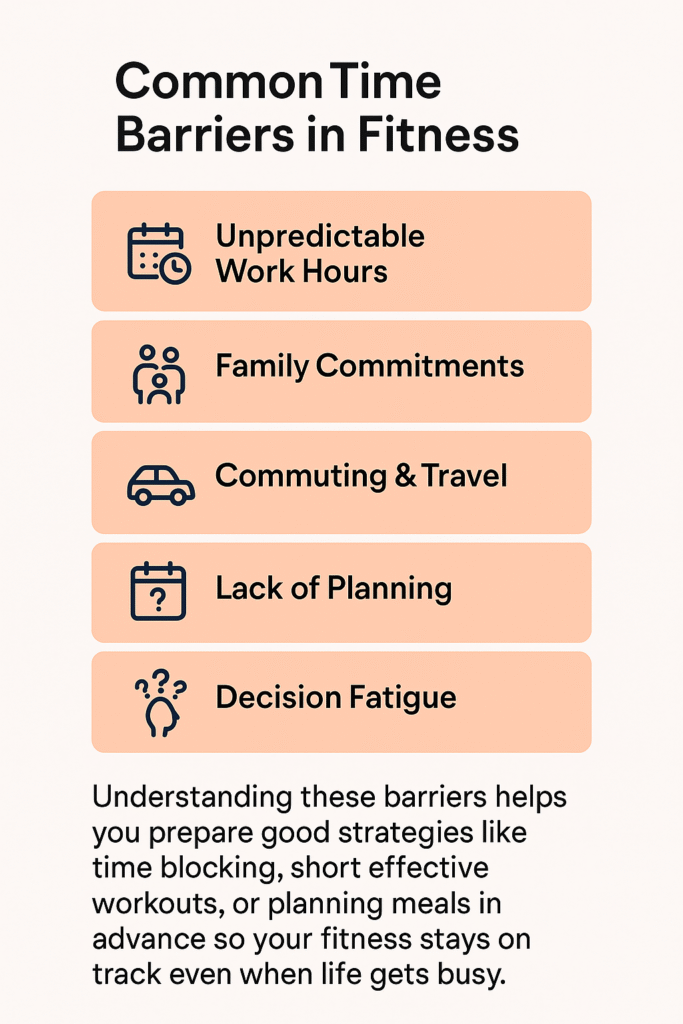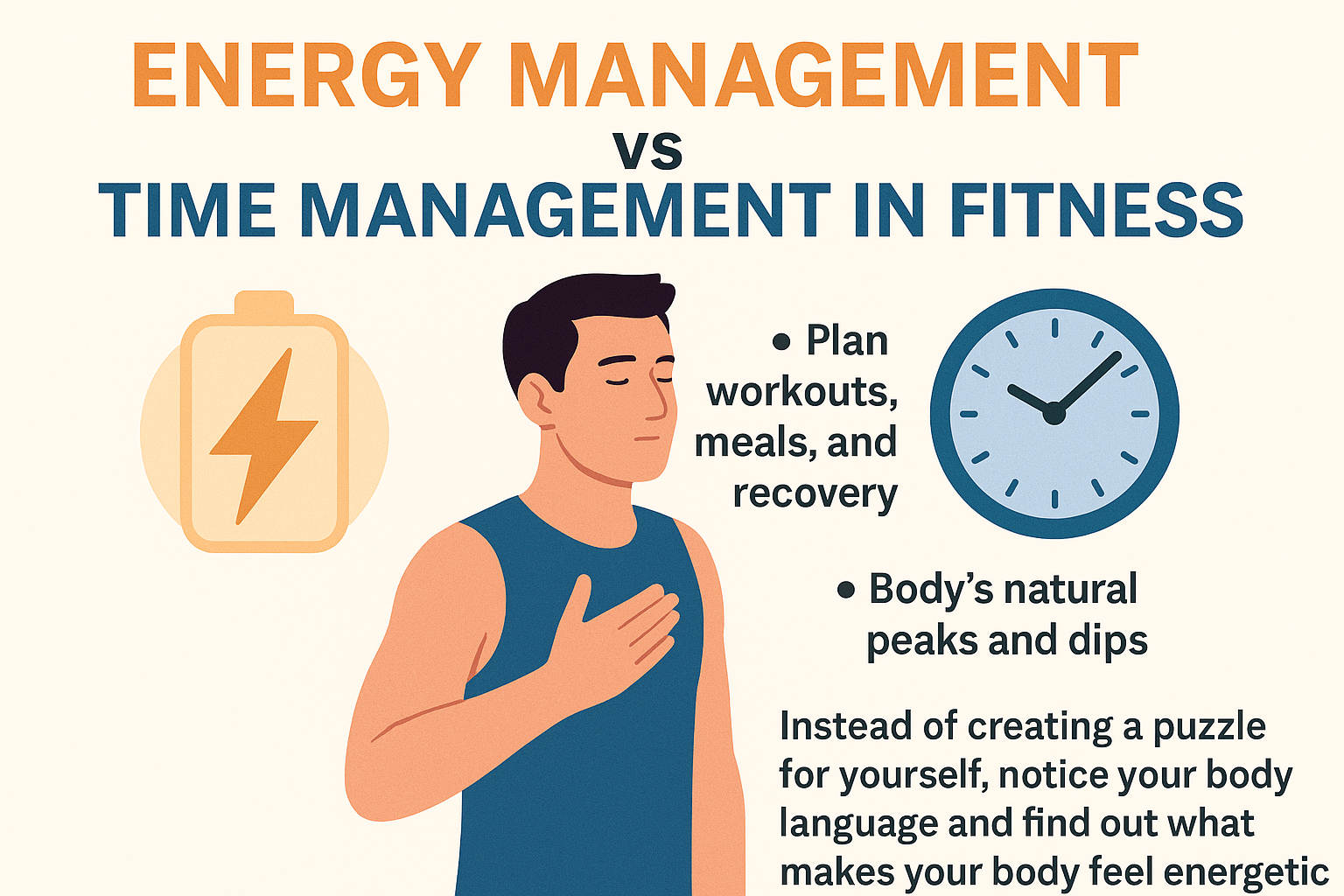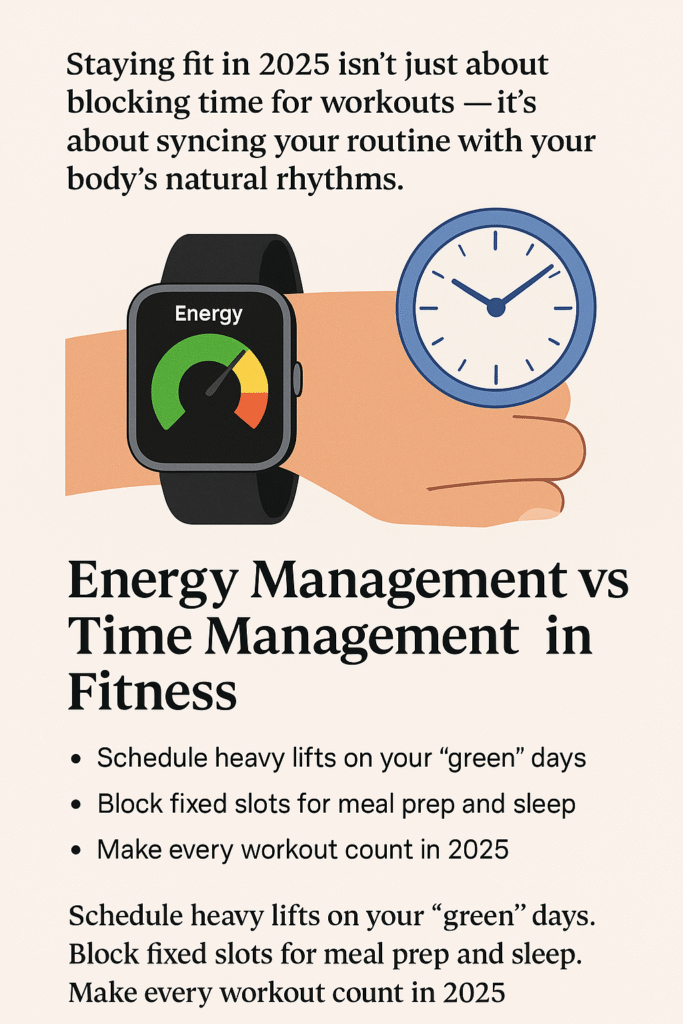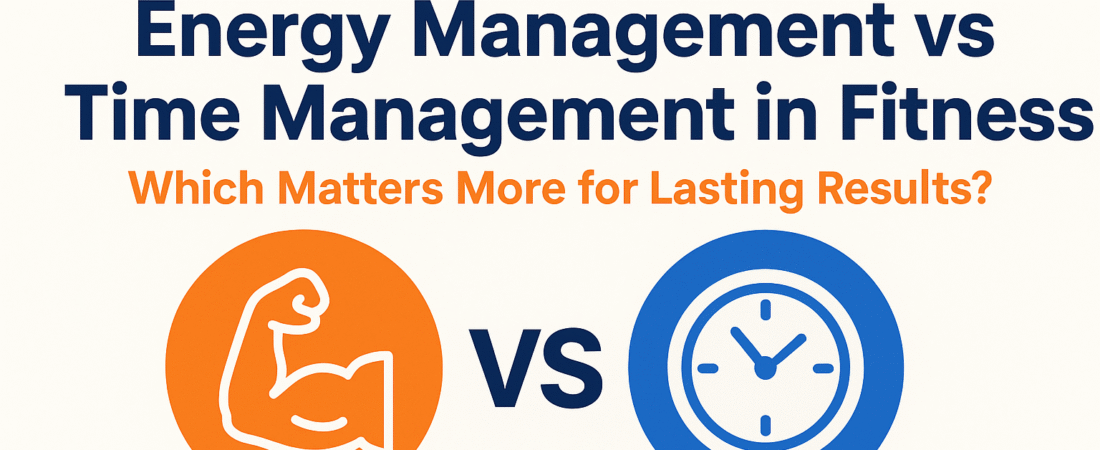It is common nowadays in hurly burly words that every person makes an effort for energy management and time management in fitness. but they cannot give proper time to every thing. Because their time table blocks hours for workouts, meal prep, and recovery. That’s why energy management vs time management in fitness has become a hot topic among trainers and athletes. By understanding these two terms and their privacy policy you can have a good and healthy lifestyle and by ignoring your poor health can face struggle and efforts. In this article I will tell you how you manage your energy and time about fitness and you maximize the result by combining both. In the end you will discover good health in your time.
Table of Contents
Time Management in Fitness
Time management in fitness is one of the challenging questions for busy people. Without managing your time you cannot fulfill your daily or every need of life. So time management also affects your health and fitness. It depends upon you. That’s why time management in fitness is more than just a productivity trick. It’s the foundation of a consistent, healthy lifestyle. how to plan your workouts, meal prep, and recovery so you can reach your fitness goals even with a demanding routine and also manage your time easily.by managing your time you will see long lasting fitness results.
Why Time Management Matters for Fitness
Most people fail to reach their fitness goals not because of lack of motivation but because of poor planning. They think that they can do every work in time . There is no need for effort on schedule . but Without scheduling your workouts, meal prep, and recovery time, your health quickly takes a back seat to work, family, and social obligations. Effective time management in fitness ensures your exercise sessions become non-negotiable appointments instead of optional tasks. When you manage your time well, you build consistency, reduce stress, and create room for proper rest and nutrition — the three pillars of long-term results. In short, planning your time is what turns fitness from a wish into a lifestyle.
Common Time Barriers

Even with the best intentions,motivations in everyday life can disturb a fitness routine. Some of the most common time barriers in fitness include:
Unpredictable Work Hours: Long or shifting schedules make it hard to stick to workout plans.
Family Commitments: Caring for children or relatives often takes priority over exercise.
Commuting & Travel: Time spent on the road reduces the window for workouts and meal prep.
Lack of Planning: Without a set schedule, workouts get pushed aside for other tasks.
Decision Fatigue: Wasting time deciding “what workout to do” eats into training time.
Understanding these barriers helps you prepare good strategies like time blocking, short effective workouts, or planning meals in advance so your fitness stays on track even when life gets busy.
Proven Time Management Strategies for Fitness
Once you’ve identified your biggest time barriers, it’s easier to put practical systems in place. These time management strategies in fitness help you stay consistent even with a busy schedule:
Time Blocking Your Workouts: Treat exercise like an appointment. Block out 30–60 minutes in your calendar just as you would for a meeting.
Morning or Lunch Break Workouts: Use your highest-energy time (morning or midday) for training to reduce the risk of skipping sessions later.
Batch Meal Prep: Cook and portion healthy meals on weekends or free evenings so you save hours during the week and avoid unhealthy food choices.
Short, High-Intensity Workouts: If time is tight, go for HIIT or circuit training. These deliver major fitness benefits in 15–30 minutes.
Plan Recovery & Sleep: Schedule enough rest and recovery days. Good sleep improves performance and helps you avoid burnout.
Use Apps & Reminders: Fitness planners, habit trackers, and smartwatches can remind you of workout times and help you stay accountable.
By applying even two or three of these strategies, in your daily life you’ll see how time management in fitness turns limited hours into measurable progress and long-term consistency.
Sample Weekly Time Management Schedule for Fitness
Day | Morning (Before Work) | Lunch Break / Midday | Evening (After Work) |
Monday | 30-min strength training workout | Healthy packed lunch (meal prep from weekend) | 15-min stretching / light walk |
Tuesday | Rest or 15-min mobility routine | High-protein lunch + hydration check | 30-min HIIT workout |
Wednesday | 30-min cardio session | Balanced lunch & short walk | Meal prep for next 2 days |
| Thursday | Rest or yoga | Salad & smoothie break | 45-min gym (weights) |
| Friday | 20-min HIIT or bodyweight circuit | Balanced lunch | Family time + early sleep |
Saturday | Longer outdoor activity (hike, run, sport) | Healthy picnic / snack prep | Recovery (foam rolling, stretching) |
Sunday | Meal prep for the week + | Light walk / family activity | Plan next week’s workouts |
for more health and fitness tips click the button link and read my article carefully on HealModeX.com
Common Mistakes to Avoid
Over-scheduling
Ignoring rest time
Skipping workouts due to minor delays.
Energy Management in Fitness

Your body is nothing without energy levels and you can do nothing without them. Most people manage their time but ignore their fitness. Energy management vs time management in fitness is not about simply taking rest and relaxing whenever you feel like it — it means planning your workouts, meals, and recovery around your body’s natural peaks and dips so you train smarter, not just harder. Instead of creating a puzzle for yourself, notice your body language and find out what makes your body feel fully energetic. This approach reduces burnout, improves performance, and helps you stick to your routine even with a busy schedule.
For example, working all the time and living a hectic lifestyle can lower your energy levels. You can regain your energy by taking proper meals, exercising, focusing on good nutrition, and fulfilling your sleep needs. By aligning your exercise with your energy rhythms and understanding energy management vs time management in fitness, you’ll see faster progress, better recovery, and more enjoyment from every session.
Energy Management vs Time Management in Fitness
Aspect | Time Management in Fitness | Energy Management in Fitness |
Core Focus | Organizing workout, meal, and recovery by the clock | Organizing workout, meal, and recovery by the clock |
Goal | Fit exercise into a busy schedule | Maximize performance and reduce burnout |
How It Works | Fixed workout slots (e.g., 7 AM daily) | Flexible timing based on high-energy peaks (e.g., 7 AM one day, 5 PM next) |
Benefits | Consistency, predictability, easier habit-building | Higher workout quality, better recovery, sustainable progress |
| Challenges | Can lead to skipped sessions when schedule changes | Requires self-awareness and tracking energy patterns |
Best For | People who thrive on strict routines | People with variable schedules or who want peak performance |
Example | “I work out 30 minutes at 6 AM every day” | “I do intense workouts when I feel strongest and lighter ones when energy dips” |
2025 Edition: Latest Research on Energy & Time Management in Fitness

Staying fit in 2025 isn’t just about blocking time for workouts — it’s about syncing your routine with your body’s natural rhythms. New studies published in Sports Medicine Journal (2024–2025) show that people who schedule training sessions around their peak energy windows see up to 20–30% higher performance compared to those who exercise at random times. Wearable tech such as WHOOP, Apple Watch Series 10, and Oura Ring now track heart-rate variability, sleep cycles, and daily strain, giving you a real-time “energy dashboard” to plan workouts more effectively and understand energy management vs time management in fitness.
At the same time, productivity experts emphasise that time management remains crucial for habit building: blocking fixed slots for meal prep, recovery, and sleep improves long-term consistency. Combining these two approaches — planning your calendar (time) while watching your energy metrics — is now considered the gold standard for sustainable fitness results. This makes energy management vs time management in fitness one of the most important topics for anyone trying to achieve lasting results.
Create a simple weekly plan using your watch or app’s energy graph. Schedule heavy lifts on your “green” days and lighter movement on “yellow” or “red” days. This 2025 strategy lets you make every workout count without burning out and shows how mastering energy management vs time management in fitness can transform your training routine.
Common Mistakes People Make
Even with the best plans, many people unknowingly sabotage their fitness progress. Some of the most frequent mistakes in energy management vs time management in fitness include:
- Overloading the Schedule: Packing in too many workouts or meal prep sessions without considering recovery time leads to burnout.
- Ignoring Energy Levels: Forcing high-intensity training during low-energy periods reduces performance and increases injury risk.
- Skipping Planning Sessions: Failing to set aside even 10 minutes a week to plan workouts and meals results in inconsistency.
- Neglecting Recovery & Sleep: Not blocking time for proper rest undermines all your hard work.
for more tips about sleeping routine click the button link and read my article care fully onHealModeX.com
- Sticking to Rigid Timetables Only: Refusing to adjust your schedule to your actual energy peaks can stall progress.
By knowing these mistakes early, you can adjust your routine, combine energy management vs time management in fitness, and build a plan that’s realistic, flexible, and effective.
FAQs
- “How can I make time for fitness with a 9–5 job?”
- “Are short workouts effective?”
- “What’s the best time of day to exercise?”
By knowing these strategies you can fit in your life and manage everything easily.
Conclusion
Energy management and time management in fitness is not difficult for any type of person. But it is difficult to manage because those people do not have a proper schedule in their life.by planning your time table according to your daily routine of life you can see faster and better results of fitness and consistency give you long lasting results. Just start your day with two or more strategies. In the beginning you feel improvement in your body about fitness. sooner you master both time and energy management, the sooner your fitness routine becomes a lasting lifestyle.
If you want to strengthen both your body and your mind, fitness or dieting alone is not enough — mental peace is also essential. That’s why I’m sharing another useful article: How to Reduce Anxiety Naturally Without Pills. In it, you’ll learn about breathing techniques, sleep hygiene, movement, journaling, and lifestyle adjustments that can help you control anxiety naturally. When you follow energy management vs time management in fitness strategies, you gain mental clarity and become more consistent. Both should go hand in hand — a strong body and a calm mind.
